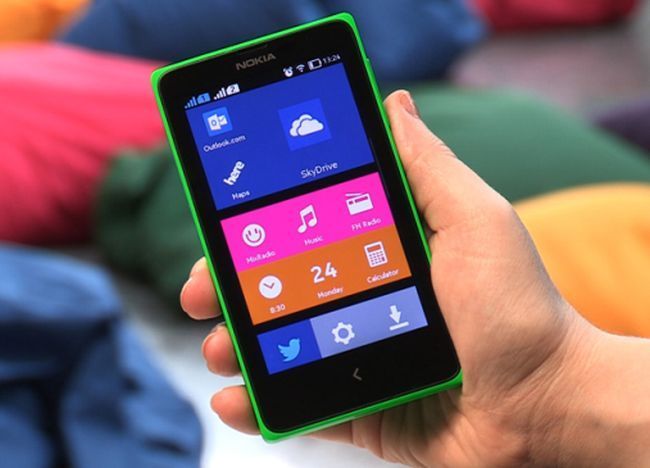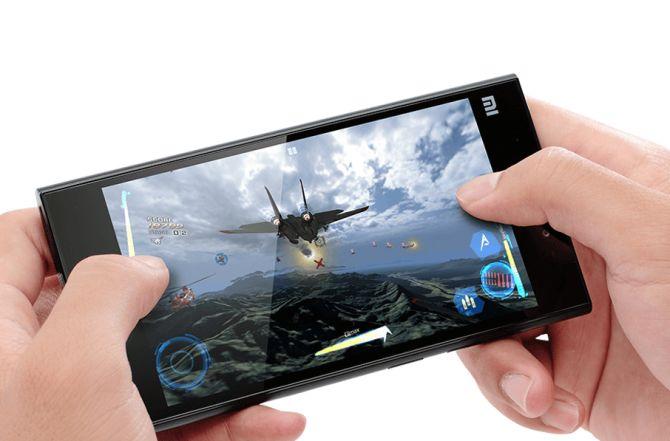
Whether it be Xolo 8X-1000, Opp Find 7 or HTC one M8, all Android phones have different specifications.
If chai, Bollywood and cricket were not enough to build a kitschy idea of India, then the American technology market research firm International Data Corporation told us late last year we could add Google's Android operating system to it, with nine of every 10 smartphones in the country using that.
As those among the 70 per cent of Indians who don't have smartphones upgrade, Android will only gain from the network effect, which tells us that the more the users, the more valuable a service becomes.
However, unlike Apple's insistence on purity of race, Google lets developers make changes to its operating system.
So, to differentiate themselves in the fish market that Android phones have become, handset makers add features to the stock Android.
What does that mean for you? We take a look at some aspects of some of the popular versions selling currently.

Stock: The mother hen
Users have the benefit of staying one step ahead of the curve as devices running on the stock Android get updates from Google before others.
The latest version of Android's KitKat generation runs on many mid- to upper-range devices such as Google's Nexus 5 (which we used to test this version) and Motorola's Moto G and X.
Any hiccups in terms of performance are easily sorted with timely updates from Google.
The successor to KitKat, the Android L, is expected soon.
Apart from the pure Android performance, the stock version of the operating system is also a heaven for developers.
For they can work on the user interface themselves using Developer Options. One limitation with the stock Android is that you need to use third-party applications for digital content.
Usually, it's the stock's neat aesthetic that wins over people.

HTC's Sense: For your ease only
For the social animal, the Taiwanese HTC Sense's BlinkFeed app is heavenly.
It not only aggregates your feeds from the social networking websites but also gives you an option to follow all your news and entertainment gossip.
And this app gets a separate homescreen. The app seems to have become so popular that HTC has announced it would be releasing it for all Android devices on the Google Play store.
BlinkFeed also learns who you interact with more on the social networks and accordingly updates your feeds. And if you've scrolled too deep, tap the screen on the top instead of crawling all the way up.
A problem though is that if your topic of interest is not in the BlinkFeed's categories you have to go one by one to every site to add it; the app's search function in such cases usually throws up a bevy of Twitter feeds.
The app, however, is not shown on the lockscreen, which you can open with a double tap or swipe up and close with a double tap.
The Sense on the One M8, the latest flagship model that we used to test the operating system, also comes with the dual-camera features that let you use both the lenses simultaneously and the Zoe app, which will also be released on the Play Store, for shooting high-resolution pictures and videos that can then be mashed up.
The Sense uses a darker colour scheme to use less battery.

Xiaomi's MIUI: The Chinese concierge
The MI User Interface, or the MIUI, is the Xiaomi's custom ROM for its phones. As the Business Standard review of Xiaomi's mid-range flagship Mi3 (the device on which we tested it) pointed out, the MIUI is fairly simple to use. All your apps are on the homescreen, like in Apple.
Through your Xiaomi account, download various themes that you can use even for only a part of the interface.
Long press the settings capacitive key and apart from the usual running-apps tray, you get a RAM cleaner, information on how much memory is in use and whether you are on a 2G or a 3G network.
Double click the lock image to switch between the music player and the lockscreen. Long press the back capacitive key to go to the camera from the lockscreen.
Long press the home capacitive key to switch on the flashlight from the lockscreen. You can bookmark the more important SMSes.
When sending a text to more than one person, you can choose different subject titles. Check the speed of the mobile internet network in the notification bar. For more, check out the MIUI official website.

Oppo's Color: Pleasing you softly
The Color's balanced and soft colour scheme is pleasing enough to try this interface.
The themes available with Color on the Oppo Find 7 (with which we tested the interface) are imaginative but sometimes so creative that you might feel lost and clueless.
For instance, in the Minions theme from the Despicable Me Hollywood series, the icon for video in the shortcut tray is a grinning minion wearing a crown stacked with fruit (a la Madagascar's King Julien).
The gesture-based controls such as drawing patterns to go to the music player or the camera or even to make calls to someone in particular without unlocking the screen will win you over.

XOLO's Hive: Build it yourself
XOLO's proprietary software suite Hive, the latest entrant in the club, takes the skin to a whole new level.
What is so interesting about Hive? It fosters ideas and suggestions.
Hive has platforms such as CONNECT and EDGE that allow XOLO users to share their ideas about Hive. Built around a community-based system, users can connect with other technology aficionados.
The community then votes for these ideas and the best ones are eventually rolled out as updates.
While CONNECT is more about idea generation, EDGE focuses on the digital content, where artists showcase their themes, wallpapers, ringtones, etc.
All this personalised stuff can be downloaded by XOLO users.
Hive's power management system is remarkable. Working on XOLO's 8X-1000 smartphone, Hive keeps the user up to date on the core usage (the 8X-1000 runs on a 1.4GHz eight-core processor).
A power widget also shows the video and audio playback time and talk time.
The Hive launcher has filters that help users manage apps with ease. It also comes with a one-touch RAM cleaner that frees up space in one go.











